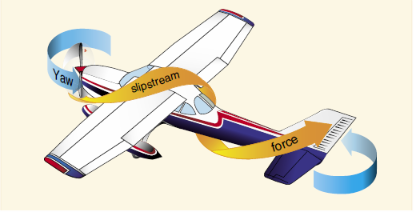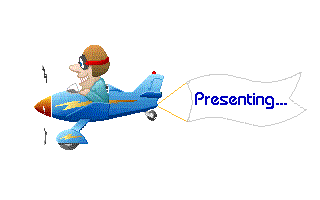CORKSCREW EFFECT
The high speed rotation of the propeller gives a corkscrew or spiraling rotation to the slipstream, At high propeller speeds and low forward speed or motion of the plane (as in take offs and approaches to power-on stalls), this spiraling rotation is very compact and exerts a strong side ward force on the vertical tail surface.
Look at the picture below. The propeller causes a slipstream over the plane and it then exerts a force on the left side of the vertical tail surface. This then pushes the tail surface to the right and the opposite reaction is that the nose goes to the left or Yaws to the left about the aircraft's vertical axis.

As the forward speed increases, this spiral effect elongated and becomes less effective. This corkscrew flow also causes a rolling motion around the longitudinal axis.
Notice that this rolling moment caused the corkscrew is to the right, while the rolling effect caused by torque reaction (part 1 ) is to the left - in effect one may counteract the other.
Come back for Part 3 Gyroscopic Action. See you then.


No comments:
Post a Comment